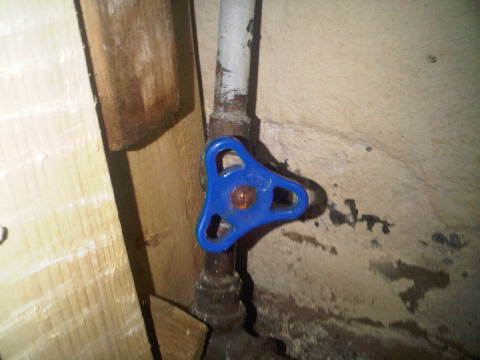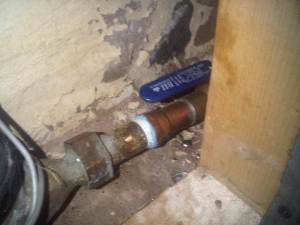In the home maintenance department, something we don’t think of doing very often is checking the valve to our main water line (the one that comes in from outside), but trust me, it’s a good idea to do it.
I recently had a phone jack short out in the basement after a big storm, and when the Bell guy arrived to fix it, he asked me if I knew I had water under my hardwood. He was a big guy and when he bounced on his heels, I could hear the “squidge, squidge, squidge” of water beneath the floor. It turned out the valve to the main water line was leaking and had been for a while.
Stopping that kind of leak isn’t easy because you have to shut off water to the entire house. That means calling the City of Ottawa and the day I called, 311 was not answering calls very quickly. I was stuck on hold for about half an hour before I finally gave up.
I called the number on my water bill, and ended up with someone at Billings who transferred me to the right department, Environmental Services, where I got a recording and was told to leave a message. (Imagine how much damage could be caused if you had a real flood instead of a slow drip with that kind of delay!)
I did get a call back not long after, however, and learned it takes the city 1-3 hours from when the request is made to shut off the water to respond, as a city worker has to come out and find what’s called the standpipe. It costs $ 86 to have them do the on and off shut-off, which is added to your water bill. They won’t tell you where the stand pipe is, and they won’t let your plumber do it, even if your plumber has a key; I’m guessing for liability reasons. Sometimes the standpipes don’t work and have to be repaired so I think you should pay the $ 86 and not take a chance on it.
Now you have to have a plumber ready to replace the valve on the same day they shut off the water or you’ll be without water until he does. The plumber won’t come until the water has been shut off and can’t leave until the city comes back to turn it on again, so all this can take quite a bit of coordination.
In my case, the city’s records for the location of the standpipe were off by several metres and so the worker dug up the flagstone in my front walk by mistake before he realized he was in the wrong spot. (I am still waiting to have that put back in place; the city tells me they’ll be out today to do it, so I expect that will be done soon. Fingers crossed.)
It turns out that the valve I’d had for years– the triangular blue one–can give out under pressure. It is also susceptible to leaking if it is left all the way open or all the way closed. And it can also leak when opened only half way. In other words, it’s a leak waiting to happen!
Mine has now been replaced with one of these yellow handles. What’s nice about them is that you can tell when they’re open and shut without the guesswork. “Open” is when the handle is parallel to the pipe it’s attached to; “closed” is perpendicular to the pipe.These are called “ball” valves and they are less susceptible to wear.
My plumber also installed a second shut-off on the other side of the water meter (now required by Code) so that if there is ever a need to shut off the water to the entire house again, for example to replace the meter, there is no need to call the city to come out and find that standpipe again.
My advice? Check your main valve for leaks regularly.
If you need to get it replaced, call Environmental Services directly. Their number is 613 580-2424 extension 22300. I found them courteous and responsive; once I got hold of them they were great. They’re open until 4:30 weekdays. After that, you have to call 311 to place the order and that can take a while if the lines are busy.














Thank you for this very helpful article!! Probably saved me much time sitting on hold!!
Great, glad it helped!